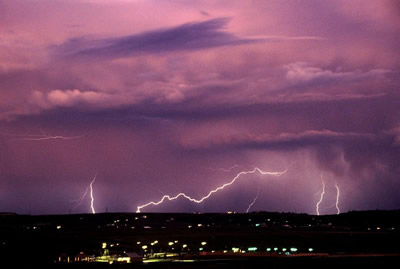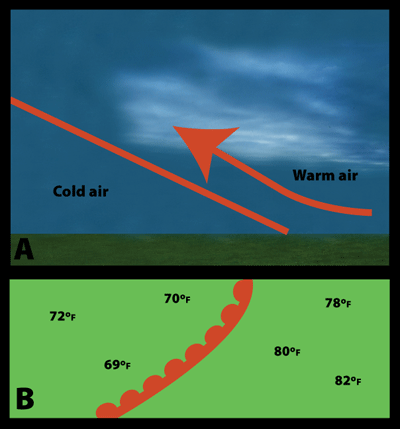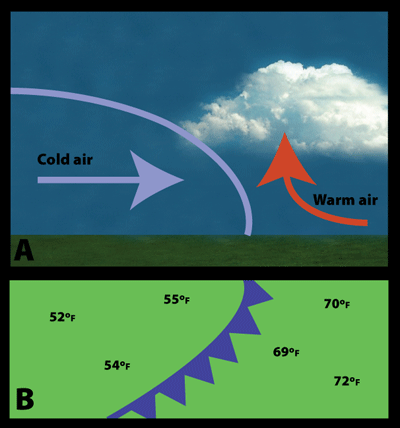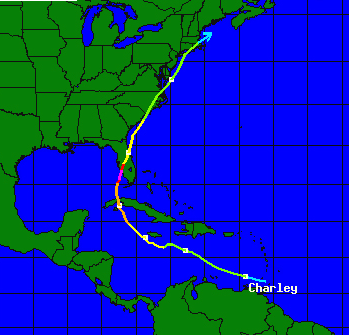Click on image for full size
Image Courtesy of University Corporation for Atmospheric Research/Carlye Calvin
Types of Lightning
Lightning can take place in several different areas of a thunderstorm. Most lightning (about 80%) occurs within a single cloud and is called cloud-to-cloud lightning. Most of the other 20% of lightning involves a stroke from the cloud to the ground. Damage is usually caused where the lightning strikes the ground. And sometimes lightning can jump from one cloud to another or to the surrounding air.
Most of the lightning we see appears as a single line of bright white light, called streak lightning. However, several other types of lightning can occur.
Forked lightning occurs when a second lightning stroke doesn't follow the same path as the first lightning stroke. It usually follows a zigzagging pattern and appears forked with many branches. Forked lightning can go from cloud-to-ground, cloud-to-cloud, or cloud-to-air.
Ribbon lightning occurs in thunderstorms with high cross winds and multiple strokes of lightning. Winds separate the strokes of the lightning bold, making it look like there are parallel streaks of light. This is a form of cloud-to-ground lightning.
Bead lightning is a relatively rare form of lightning. In bead lightning, the stroke appears to break up into a string of short, bright sections, and looks like a string of beads. This is a form of cloud-to-ground lightning.
Sheet lightning occurs when the actual bolt or flash of lightning is hidden behind the clouds. When sheet lightning occurs the entire sky flashes a glowing white color. This is a form of cloud-to-cloud lightning.
Heat lightning occurs within a cloud, but the observer is too far away from the storm for its thunder to be heard. The sound waves dissipate before reaching the observer. Instead of individual strokes, heat lightning often lights up the entire cloud. This is a form of cloud-to-cloud lightning.















